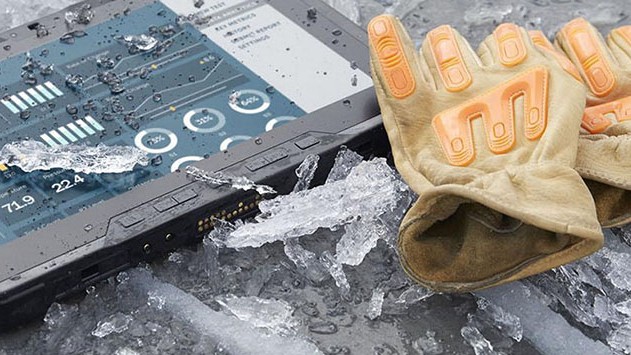For most workers, computers have become ubiquitous in their daily workflow. However, some workplaces are too inhospitable for the average consumer or off-the-shelf PC. Construction sites, factory floors, oil rigs, and other hazardous worksites simply are too much for a typical computer to handle.
Whether it’s due to heavy vibrations, constant exposure to dust and water, or a high chance of damage, these environments demand a different kind of computer. In these places, the best choice is a rugged industrial-grade tablet, which combines portability with resilience in one package.
What Qualifies as Rugged?
Article Guide
When using a term like “rugged,” it helps to understand what that means in terms of computers. While there is no industry-wide regulation that a computer must meet to be called “rugged,” trustworthy manufacturers will design and build their products to certain standards. These standards include:
- MIL-STD-810 G: This is the standard the U.S. military implements for all electronic hardware used by the armed forces. It includes requirements for shock resistance, humidity, electrostatic environments, and more. While initially written for military purposes, many civilian manufacturers will adopt some or all of MIL-STD-810 G for their own devices.
- Ingress Protection: Industrial environments are often filled with dust and water, both of which can severely damage a computer’s electronic components if they get inside the casing. Therefore, an industrial-grade computer or tablet will have a casing with a strong ingress protection (IP) rating, such as IP65, to keep dust and water out.
In addition to these standards, manufacturers often adopt components and features that naturally complement a harsh working environment. One easy example is crack- and scratch-resistant screen glass, such as Gorilla Glass. This helps protect the tablet from debris or mishandling.
Anti-glare filters can also be a critical inclusion, as environments like factory floors and construction sites often feature harsh lighting that obscures most of the screen.
Why Go Rugged?
For some business owners, upgrading their operations with rugged tablets can seem too much of a hassle, or they feel they can get by just fine with consumer-grade products. Sadly, this simply isn’t true. A consumer-grade PC or tablet isn’t designed or manufactured to the standards needed for a harsh operating environment.
The greatest advantages of rugged tablets are:
- They can handle harsh operating environments. With design features like IP65-sealed casings, shock-resistant SSDs, and tempered glass screens, an industrial-grade tablet can endure the rigors of the factory floor, construction site, oil rig, or wherever else you try to use it.
- They deliver computing capabilities in areas that wouldn’t have it otherwise. Industrial worksites can benefit heavily from having a computer for tasks like equipment management, inventory tracking, and communication but cannot risk using consumer-grade products. Using tablets and computers designed specifically for their environment lets businesses reap the benefits of the digital age.
- They save money by not having to purchase replacements. If a business tried using consumer-grade products on its worksite, it would immediately encounter issues. Fans would get clogged with dust, hard drive disks would get shaken out of alignment, and screens would get cracked. All of these issues require repairs or replacement, expenses that can be avoided by simply purchasing an industrial-grade tablet in the first place.
Other Benefits and Features of Rugged Industrial Tablets
While consumer-grade tablets are undoubtedly effective and flexible, they are designed with the general public in mind and lack specific features that make them attractive for industrial environments. By comparison, an industrial tablet can be customized with features like:
- Barcode scanners and RFID readers for managing inventory.
- Hot-swappable batteries for extended operations.
- VESA mountings so they can be attached to a permanent workstation or forklift.
- Capacitive touchscreens with highly accurate multi-touch capabilities.
- Biometric fingerprint readers for security.
Closing Thoughts
The demands of an industrial worksite are simply too much for the average consumer tablet. Trying to use such a device in such an environment will inevitably be a waste of money. However, a proper industrial-grade tablet can deliver powerful computing solutions without compromising durability.
If your business is looking for an industrial tablet solution, contact the team at Cybernet Manufacturing. We would be happy to explain how our industrial-grade computer tablets can be customized to suit your business.
Join the conversation and connect with us on this and other relevant topics – Follow us on Facebook, Twitter, Instagram, and LinkedIn.
Why Choose Rugged Tablets over Consumer Tablets
January 12, 2016
As technology continues to play a more integral in the way companies operate, many are now opting to use mobile tablet computers for their business purposes. In fact, According to Quarterly Mobile PC Shipment and…
0 Comments4 Minutes
You Can't
Learn from a Pop-up
But we can deliver knowledge to your inbox!
We dive deep in the industry looking for new trends, technology, news, and updates. We're happy to share them with you.
Knowledge, News, and Industry Updates Right in Your Inbox



